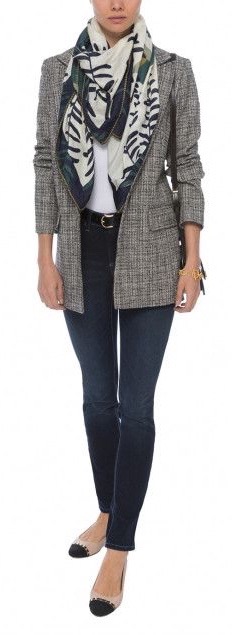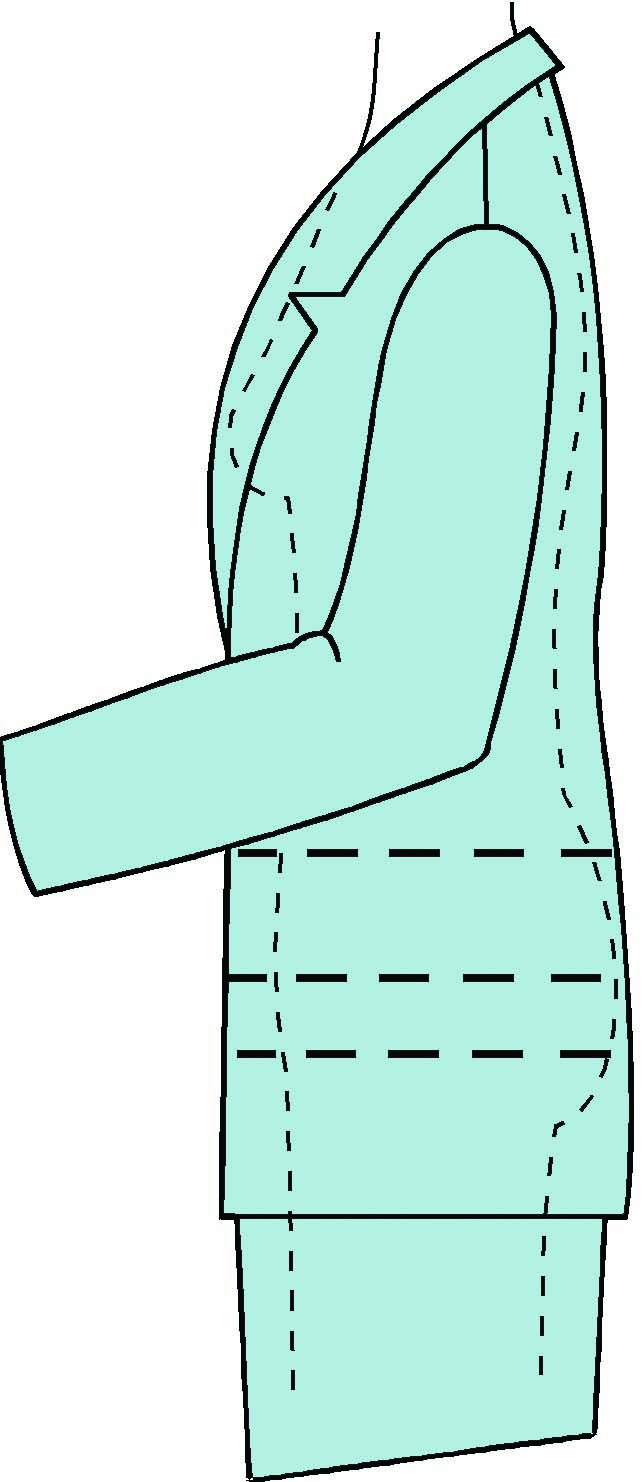Blazers for Fall – Trendy & Classic
 This season’s must-have item is not only “trendy,” it’s a twist on a classic – the menswear blazer in tweeds, plaids and flannels.
This season’s must-have item is not only “trendy,” it’s a twist on a classic – the menswear blazer in tweeds, plaids and flannels.
Seen in New York on the street during Fashion Week, oversized blazers are the subject of several seasonal trend reports. Versatile and practical, a classic blazer is a great foundation piece in your wardrobe. Depending on fabric and fit, it can be worn with a skirt or pants for work and with jeans and a tee on the weekend. The question for this season is: “Is the trendy blazer the best style for you?”
The Classic Blazer
Blazers emerged into menswear as part of the English cricket club scene in the 1880s. In a variety of striped fabrics these jackets were “a blaze of color,” hence the name “blazer.” The style became subdued in the 1930s with the modern blazer looking very similar to the British Navy reefer or pea coat but the name blazer stuck. Today the classic navy blazer is a man’s most versatile tailored jacket.
The same can be said for a woman’s navy blazer. When I had to retire one last year due to longtime wear, I replaced it with Brooks Brothers’ classic two-button wool blazer. Instead of flannel or tweed (which can visually add pounds to our frame), I chose to invest in a lighter weight worsted wool. It’s ideal for cool spring and fall weather over a shirt or sweater and fits comfortably under a coat in colder weather. If I still had my corporate job in New York, this could be the jacket in my conservative navy blue suit, doing double-duty on the weekend with jeans!
How to Shop for a Blazer
Many of this season’s trendy blazers are intentionally oversized in cut and are long, stopping below the fullest part of the hip. What might look great on fashion influencers doesn’t always work for the rest of us. This longer length looks best on taller women and is most flattering on straighter bodies. So what should the rest of us do? Chose a jacket length and fit that is flattering to our body and pleasing in proportion.
Your Best Jacket Length

From Looking Good…Everyday (Palmer/Pletsch Publishing)
Jackets should be either long enough to hide the derriere or stop somewhere above the fullest part of the hip. Avoid a jacket whose hem falls at the fullest part of your hip, unless you need to look wider in that area. Consider overall proportions and how you want to wear the jacket:
– Short jackets are best with skirts or well-fitted pants in the same or a darker color. They are most flattering on curved body shapes (hourglass or triangle).
– Jackets that stop above the fullest part of the hip are best on shorter women and those whose shoulders and hips are balanced.
– A jacket that falls below the fullest part of the hip is the most versatile length to wear with both pants and skirts.
Single- vs Double-breasted
A double-breasted blazer is powerful and sophisticated but I find that it looks best buttoned up. When unbuttoned you have quite a bit of fabric moving around you. Also note that its widely spaced buttons are horizontal design details that create a widening effect so it looks best, buttoned or unbuttoned, on a relatively slender figure. The single-breasted jacket will always compliment your height, whether you are shorter or taller on the spectrum, and can be worn neatly unbuttoned for a casual look.
Proper Fit Makes a Difference
Be sure to have the sleeves of your blazer hemmed to the proper length. I prefer mine to be hemmed so a shirt sleeve peeks out just so, but they can fall at or just below the wristbone. (Note: If you have chosen the oversized look, it’s likely you can push the sleeves up for that chic casual look as seen on the model above so you may not need to add in the cost of an alteration.) For more fitting tips read my earlier post on fitting guidelines.
Note: Photo at top is courtesy of Halsbrook, an online fashion retailer offering several chic, classic and trendy jacket styles. Jacket fit illustration is from Looking Good . . . Everyday by Nancy Nix-Rice (Palmer/Pletsch Publishing).






